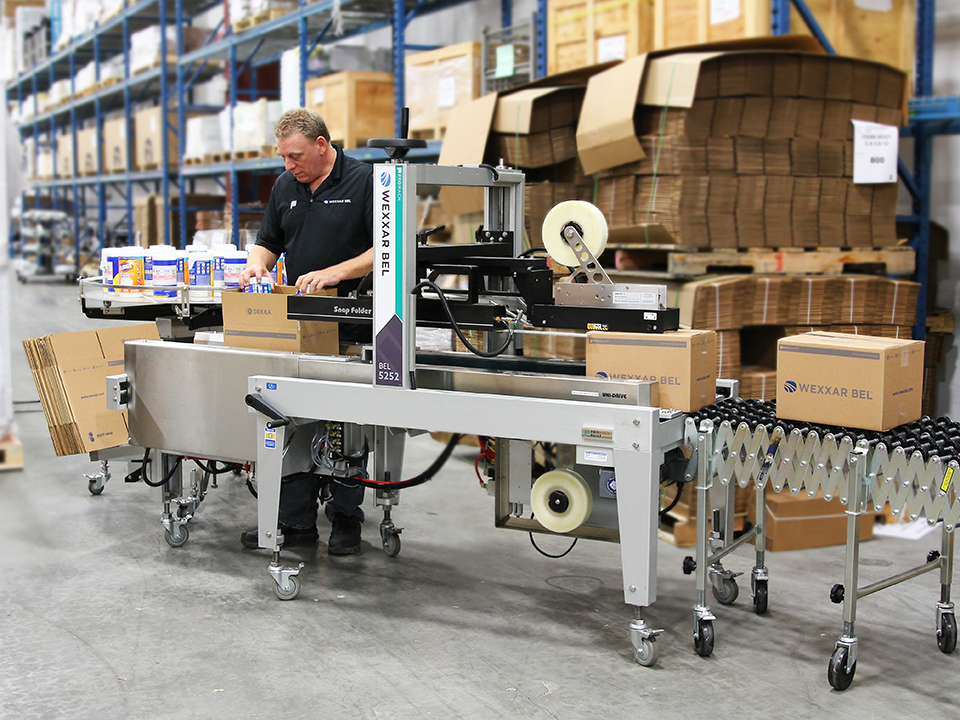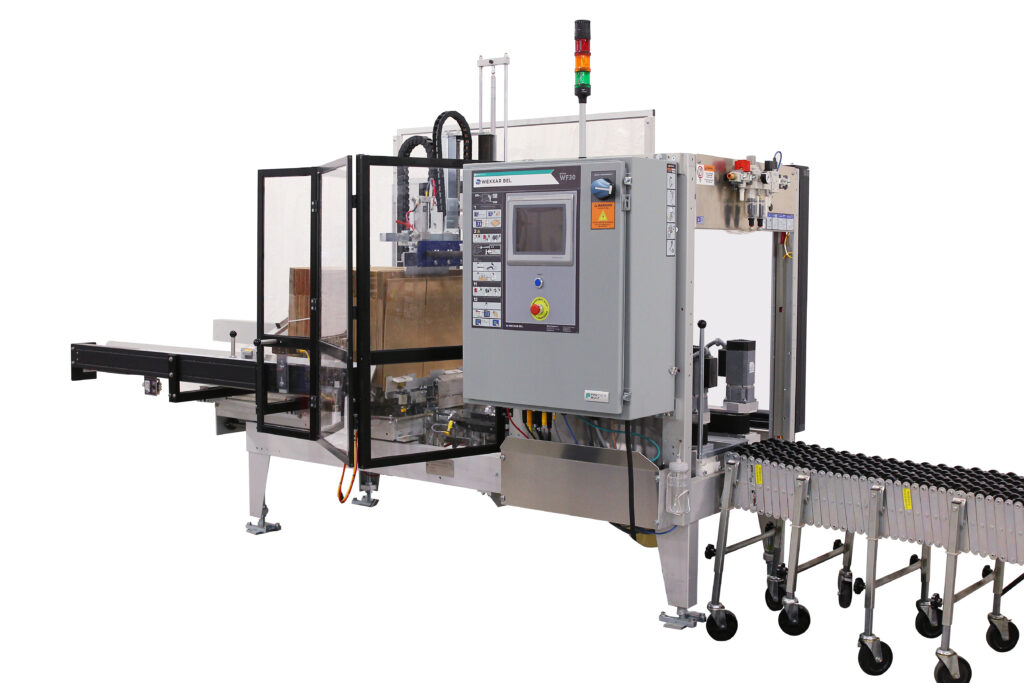As small to medium size companies look to meet growth projections, a proven strategy often involves automating their packing process. These solutions involve either semi-automatic or fully-automatic case formers and sealers. The level of automation is typically dictated by the speed you’re looking to achieve and targeted manpower to operate the system.

Semi-Automatic
Most semi-automation applications are going to be very operator-driven, and provide a consistent, lower rate of production. For both case forming and sealing, the operator is responsible for feeding the machine; the operator inserts an unfolded case blank into the case former. Once the case is formed on the bottom, he or she loads the product in, then closes the flaps on top and feeds it into the case sealer for sealing.
A semi-automatic solution is ideal when applications call for packing about five or fewer cases per minute. Some semi-automatic systems can increase throughput by increasing the number of operators and potentially having different operators form and pack the case. Again, this solution is heavily dependent on operator interaction where they will be responsible for forming, hand packing and sealing the case.

Fully-Automatic
If the goal is to increase speed or minimize operator interaction with the packing line, then a fully-automatic solution is the better choice. For the case former, an operator simply needs to load unfolded blanks in the magazine, and the machine automatically forms cases that are ready to be packed.
Depending on the application, product can be loaded manually or automatically through a case packing system. Packed cases then travel to the case sealer, where the flaps are mechanically closed and cases are automatically sealed, ready to shipping.
When all three components (case former, loader and sealer) are automatically working together, speed and efficiencies are gained as the system is driving the operator, whereas in a semi-automatic solution, the operator is driving the system.
Both semi-automatic and fully-automatic packing solutions are great alternatives to those companies looking to add a higher level of automation to their packaging operations. Both systems are flexible, allowing easy integration of components to meet changing applications. Automation is a winning strategy to bring speed and efficiency to your next packing line.
